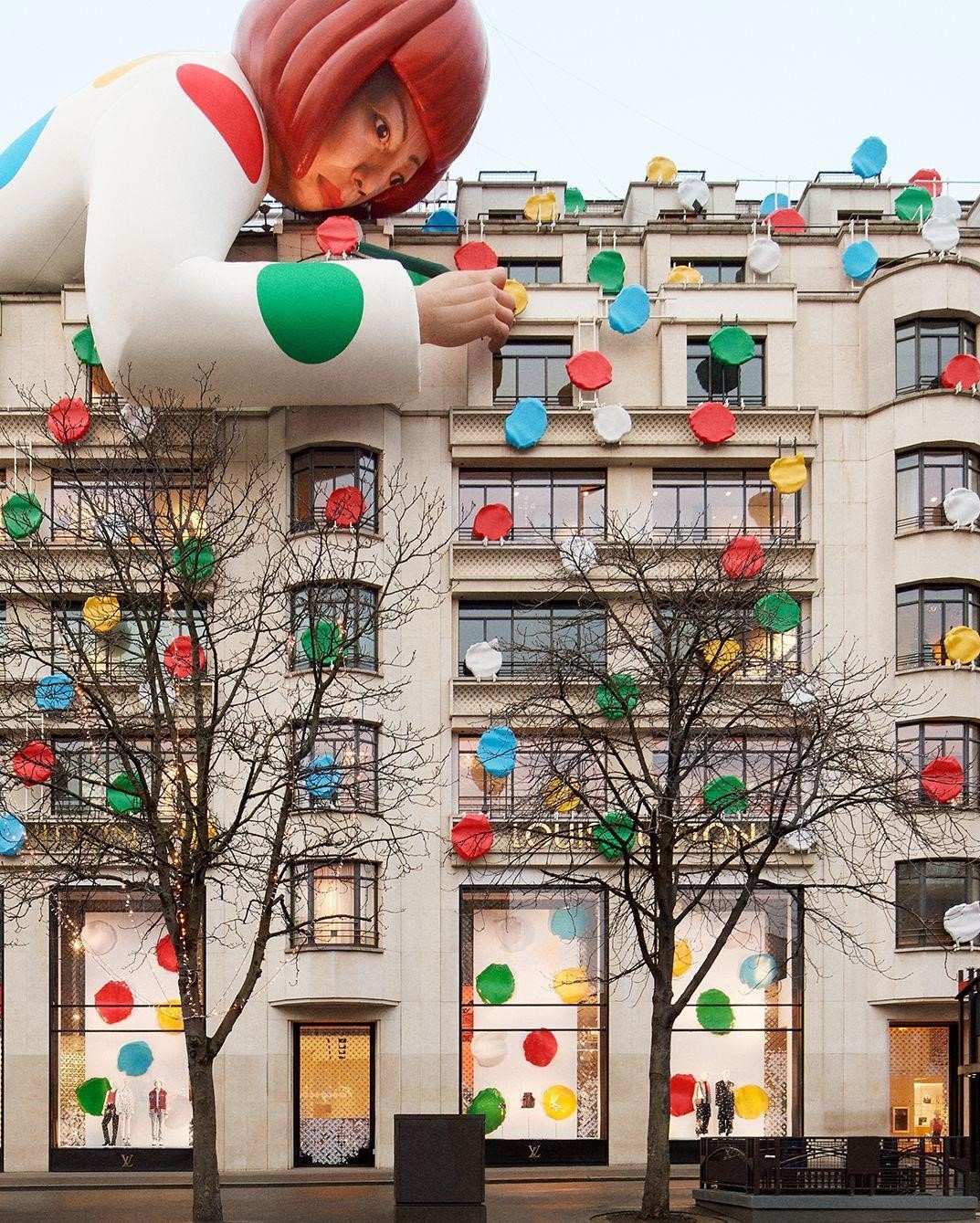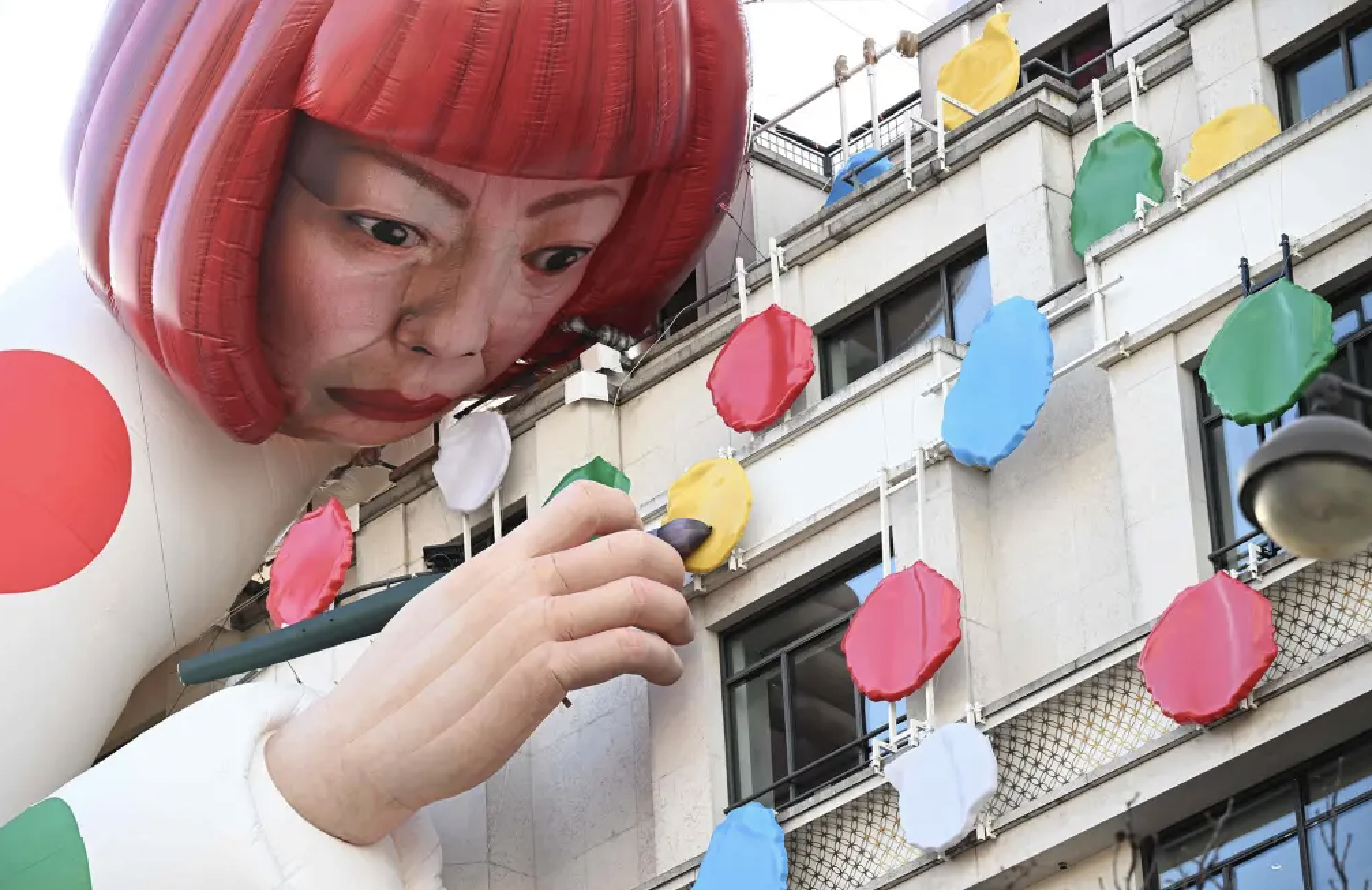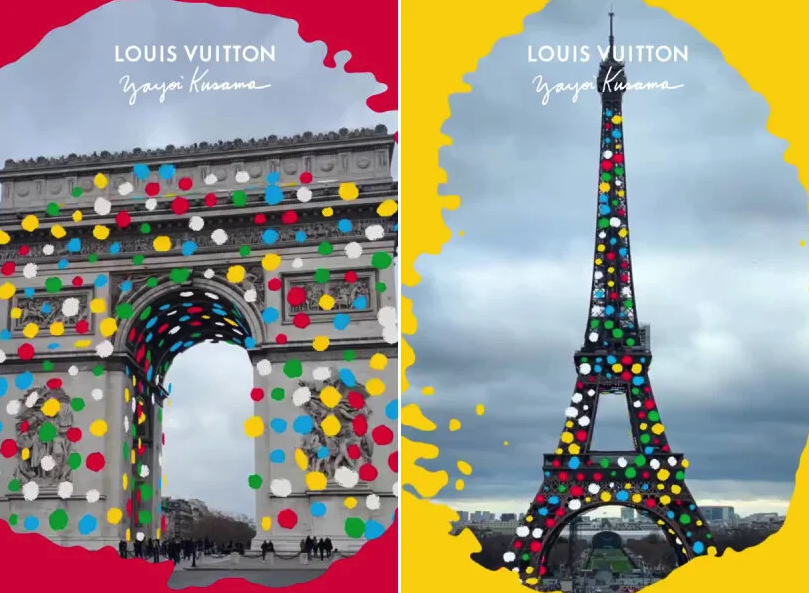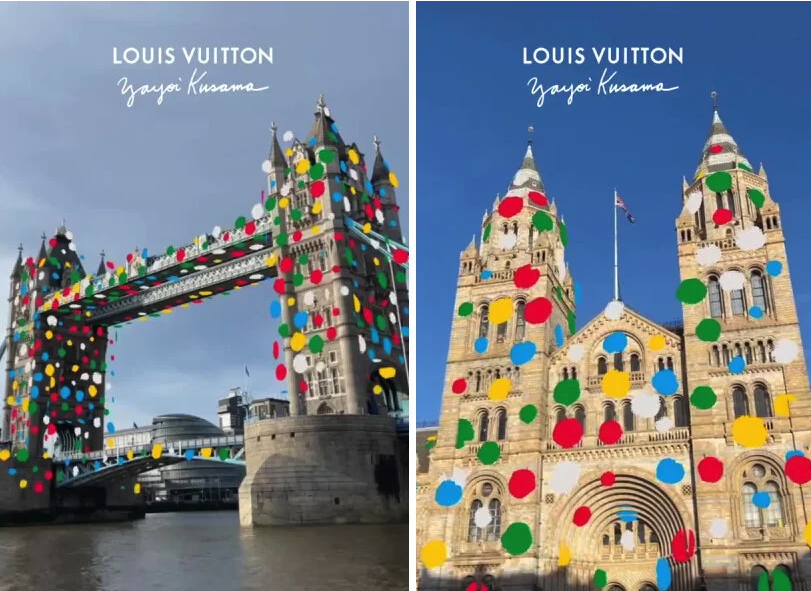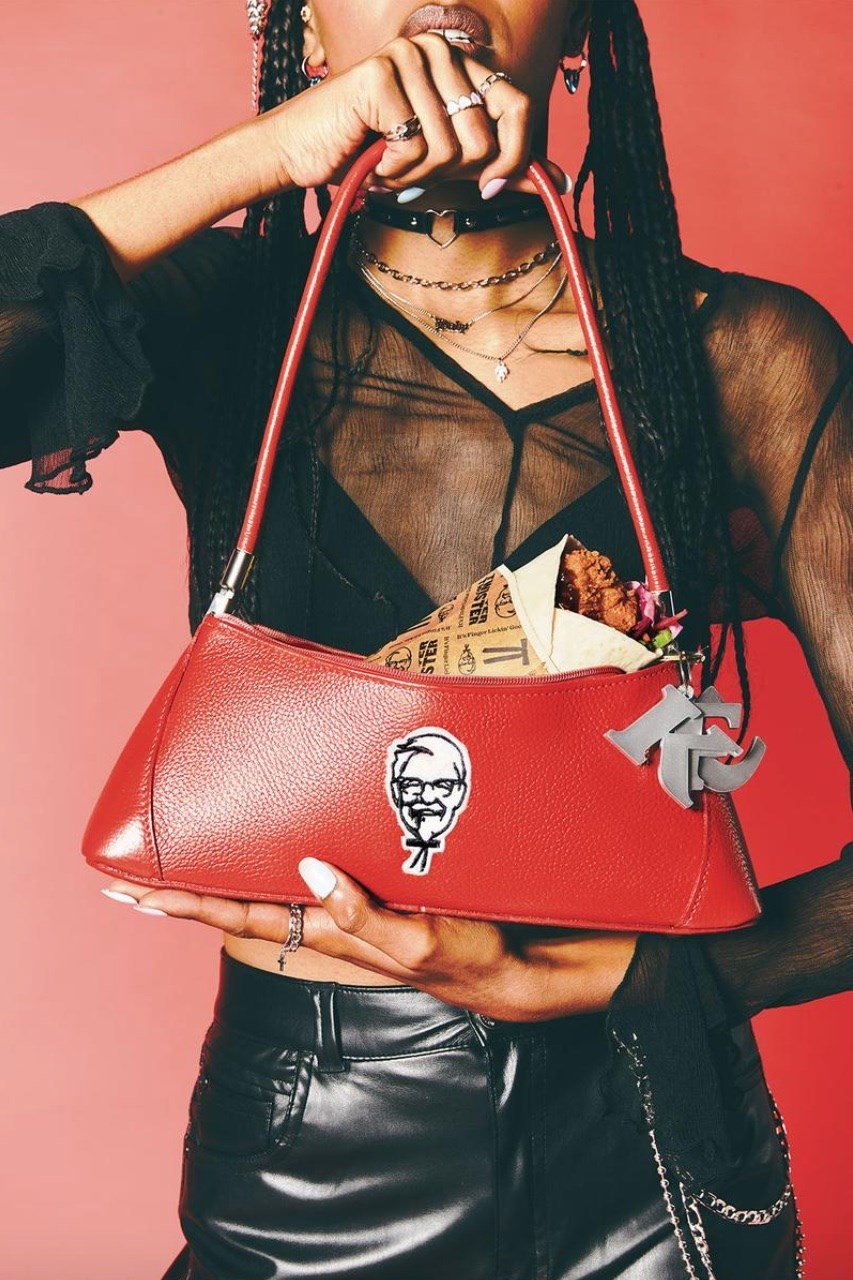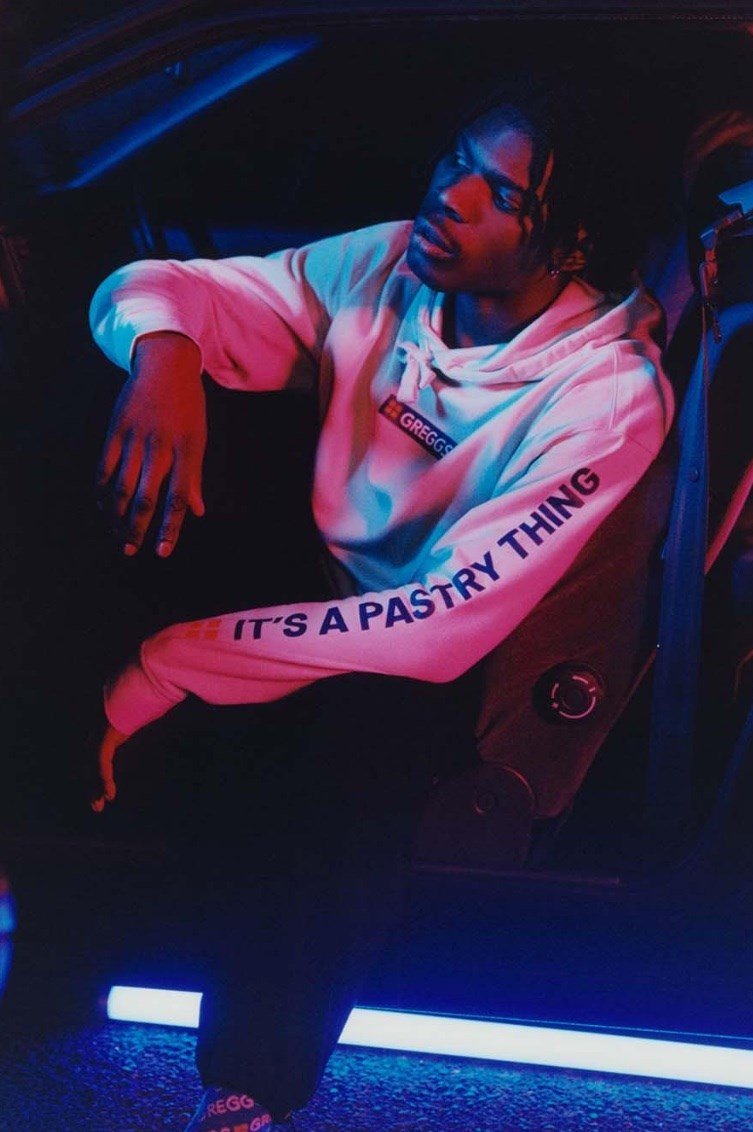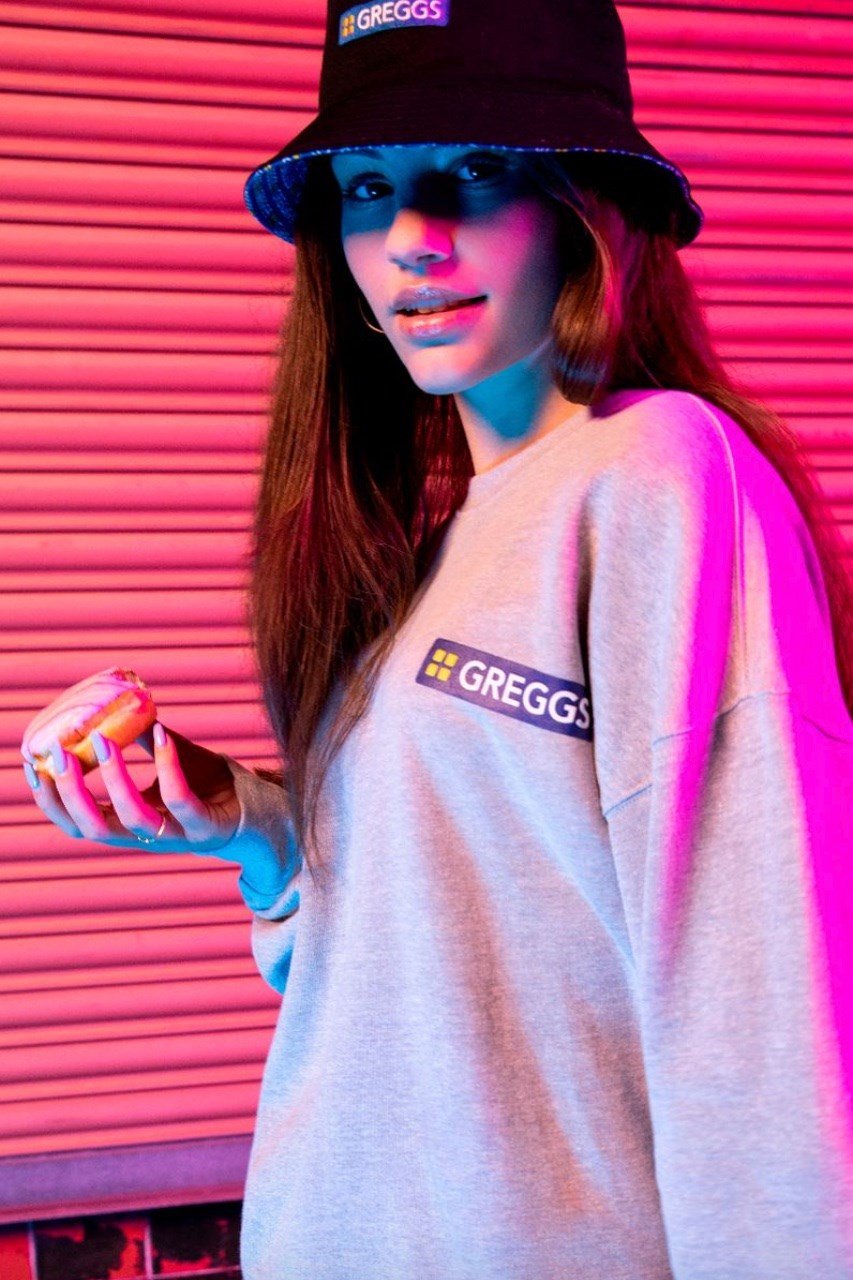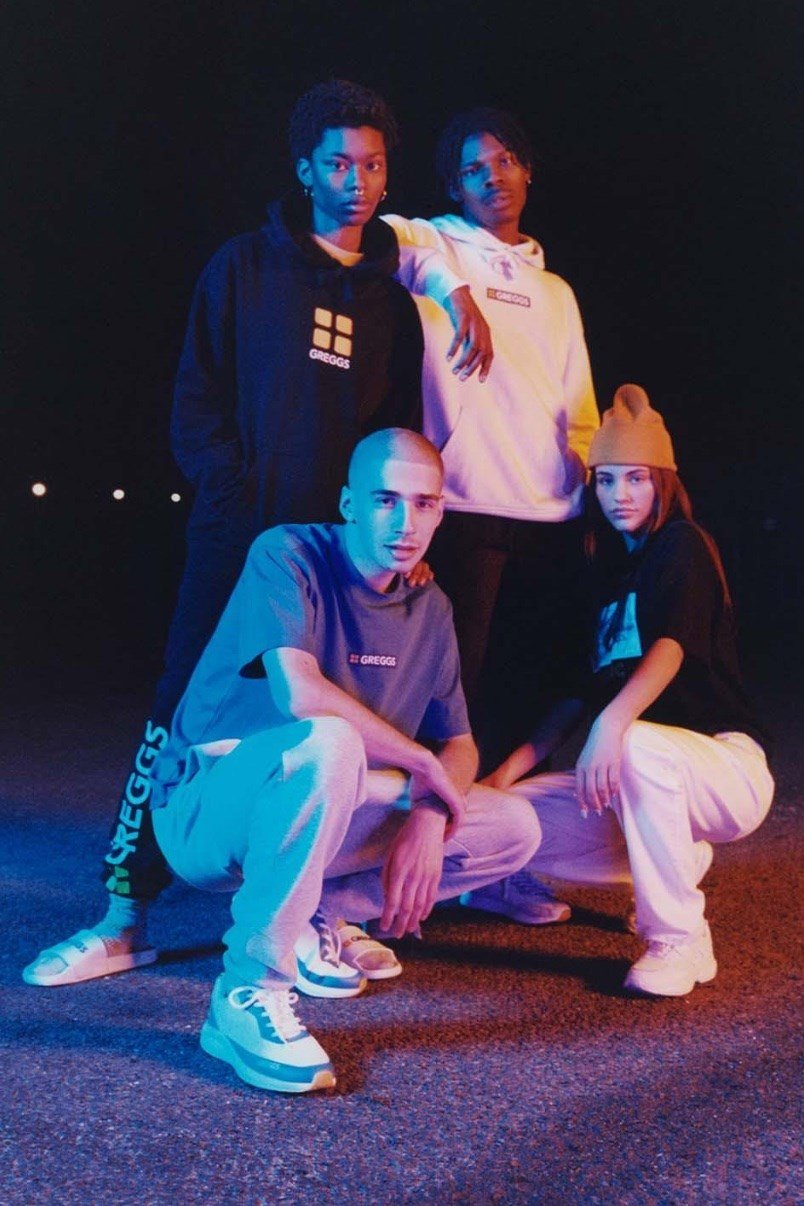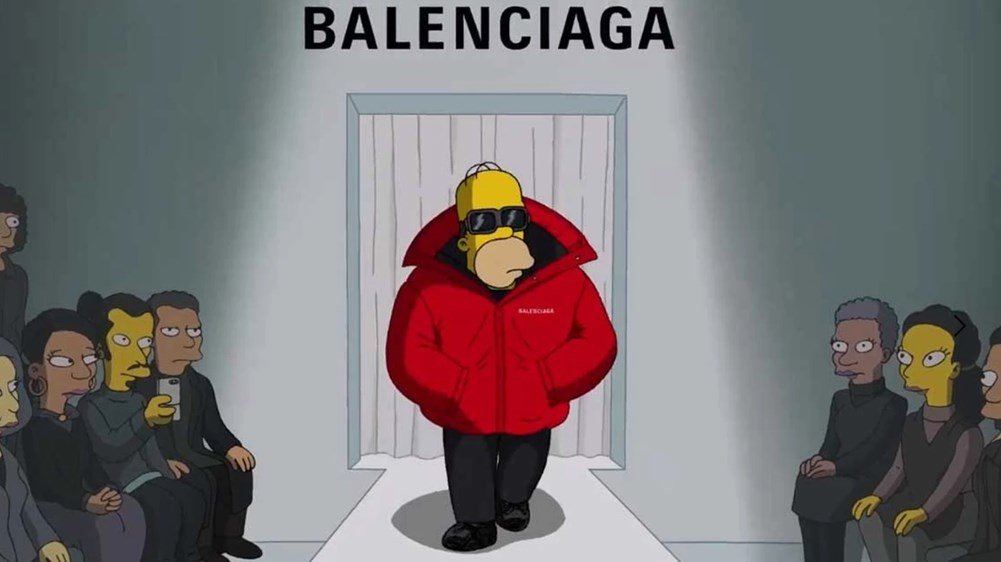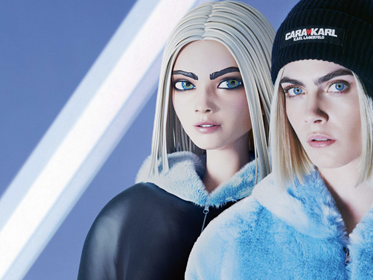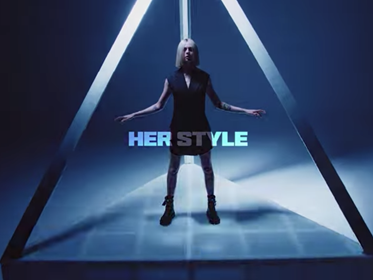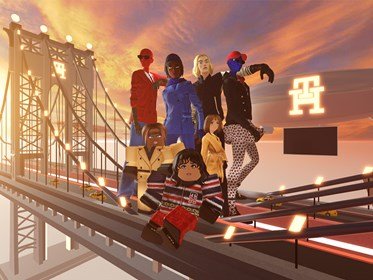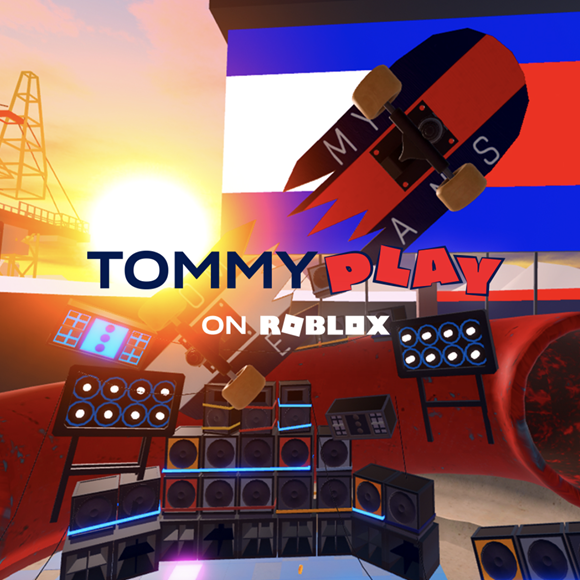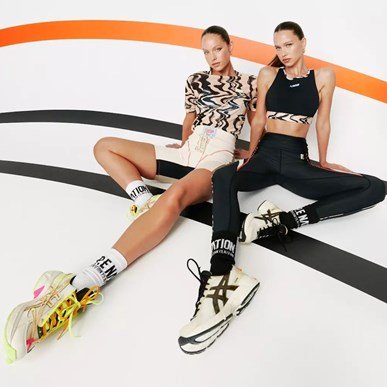Brand Collaborations
Trends
Brand Collaborations
In our latest trends piece, we’ve taken a look at some of the brands that have or are working together for the benefit of each other and the consumer. The campaigns highlight brands collaborating across industries, from different product and service propositions and even as ‘natural’ competitors.
Louis Vuitton x Yayoi Kusama
The campaign consisted of Augmented Brandscapes: Taking the project to its global destinations, Louis Vuitton used Snap’s Landmarker lens feature to detect landmarks. It projected digital overlays of Kusama’s patterns onto notable monuments, including the Statue of Liberty (New York), National Gallery (London), and Arc de Triomphe (Paris).
Robotic Replica: A life-sized Kusama replica at Louis Vuitton’s Fifth Avenue flagship in New York, which ‘paints’ polka dots onto its store window, has been widely shared across social media, with ‘Louis Vuitton Robot’ garnering over 90 million views on TikTok.
Architectural Additions: Louis Vuitton’s Champs-Élysées flagship in Paris and London luxury department store Harrods both play host to a large-scale Kusama installation, which towers over their façades. As in New York, the replica ‘paints’ the stores.
Boundless Billboards: In December, the brands teased the collaboration with a billboard on Tokyo’s Cross Shinjuku Vision (a 150 sq m screen broadcasting 3D videos). The anamorphic display shows Louis Vuitton’s famous trunk cracked open, with Kusama (wearing her recurring pumpkin motif as a hat) seemingly leaning out of the frame and peering onto the street below.
Food x Fashion Collaborations
As a collaboration-saturated fashion industry ramps up its food-based partnerships, cross-category crossovers are becoming more unpredictable than ever. We unpick the key trends and case studies driving these kitschy alliances, highlighting both visual inspirations and insight-led opportunities.
Central to this trend is a joyful sense of kitschy irony that plays into ongoing, off-kilter aesthetics especially popular with younger demographics. When considering cross-category collaborations or exploring new product avenues, prioritise humour-led design and one-off collectibles to ensure a covetable and quirky conversation piece.
KFC x Fendi
Focusing on accessories with a kitschy, collectible quality is integral to tapping this trend and creating a super-covetable hero product. KFC is quickly mastering this. To coincide with the launch of its new Twister Wrap, the chain released a leather bag in the UK that’s designed to carry the menu item itself.
Dubbed ‘The Wrapuette’ – a play on the popular 00s Fendi baguette bag that’s enjoying a resurgence among younger demographics thanks to Y2K TikTok trends – there’s a clear formula to the success of this release. Not only is it adequately ironic – employing Gen Z humour in a way that borders on satire – but the bag itself is genuinely stylish. Made from Italian leather, it replicates popular bag trends among its target audience, and is currently available via wait list.
KFC’s other forays into fashion have been equally as buzzy. Most notably, its 2020 collaboration with Crocs resulted in fried-chicken-printed shoes, complete with scented Jibbitz charms that smelled and looked like life-sized chicken drumsticks.
KFC Wrapuette
KFC x Crocs
Primark x Greggs
Partnerships between budget-friendly brands are also finding success. Irish high-street giant Primark’s team-up with UK bakery chain Greggs is a key example. The comfort-focused capsule collection included T-shirts and sweatshirts emblazoned with images of the eatery’s famous sausage rolls, accompanied by slogans like “Iconic”. The collection was a hit with shoppers, with one of the most popular items – an £8 ($10) bucket hat – now reselling on sites like Depop and eBay for over £50 ($61).
Moschino x McDonald’s
Another older but important example is Italian label Moschino’s McDonald’s-inspired collection, which included garments resembling staff uniforms, as well as accessories like phone cases and handbags. Despite being criticised by fast-food employees for mocking minimum-wage workers, the collection was a hit with consumers, and many items sold out quickly.
Toys x TV Collaborations
LEGO x Stranger Things
This 2,287-piece LEGO set is a 1:1 recreation of the most iconic scene from the hit T.V. series Stranger Things. Once pieced together, you can literally flip this set upside down to play into the duality of realms seen in the show, complete with a mini Demagorgon!
Balenciaga x The Simpsons
Immortalising (or at least seeking to insert itself) in pop cultural history, after getting guests to render themselves models by walking a red carpet catwalk to a viewing room, Balenciaga presented a bespoke episode of US cartoon The Simpsons. In the short film, Balenciaga employees including creative director DemnaGvasalia were animated, wearing full past-season Balenciaga clothing while the cartoon’s famous cast wore some of the brand’s most iconic looks. The film has garnered over 13m views. Balenciaga is no stranger to pushing the envelope for catwalk shows to maintain relevance with younger luxury fans.
Cara Loves Karl (Lagerfeld): Superstar Synth Beings
Also treading, albeit fairly lightly, on the world of synth beings, German brand Karl Lagerfeld introduced an avatar campaign focused on the legendary late designer, as well as British supermodel Cara Delevingne. Created to promote a collection described as “multifunctional, transformable, size-inclusive, gender-neutral and made with more sustainable materials”, it was sold in a dedicated pop-up in New York City’s Soho neighbourhood. And upping the innovation ante, it was promoted in Times Square via a 3D billboard.
Tommy Hilfiger’s Companion Worlds: Real Life x Roblox & Easy-Mint NFTs
US brand Tommy Hilfiger returned to New York Fashion Week (NYFW) for the first time since lockdown, with a series of related activations based on Andy Warhol’s infamous creative studio, The Factory. This expanded the reach of its show from the real world to the plains of the metaverse via interactivity aplenty.
Firstly, in partnership with US app-based “Web3 entertainment launchpad” Rove (which specialises in live minting experiences for events), Tommy Hilfiger’s physical show at the Skyline Drive-In, Brooklyn afforded all 1,200 guests the opportunity to mint their own NFTs. They could do so by simply touching their mobile phones on a near-field-communication-enabled (NFC) sticker stamped into wall prints (a process enabled by US technologists Cupcake) to confirm authentication. The check-in created a digital wallet where the Andy Warhol polaroid-style NFT was placed (in less than a minute), enticing even the crypto-apathetic/inexperienced to get involved.
Secondly, the show was simultaneously livestreamed onto virtual screens within the brand’s own Tommy Play space in co-creational metaverse game Roblox, and via its own website. Lastly, the show styles were replicated in a typically blocky (Roblox) aesthetic on avatars who strutted a digital catwalk in Roblox. Fans could purchase these digital counterparts of their favourite outfits to wear in-game.
Competitor Collaborations
‘Frenemy-based’ partnerships see industry leaders becoming unlikely allies in a bid to share research – and loyal fanbases – instead of competing. Elsewhere, established heavyweights join forces with up-and-coming brands to capitalise on this sports-centric surge. Whether it’s to combine intel or to target hypebeasts, collaboration is king in the activewear arena.
Adidas and sustainable American footwear label Allbirds paved the way for this kind of alliance back in 2021 with the release of sneakers that had the lowest carbon footprint on the market at the time (this record has since been broken by Japanese company Asics). Instead of competing, both brands joined forces to combine their research and insights, and a better product was made because of it. Although not a direct competitor in terms of activewear, Adidas’s ongoing collaboration with British luxury label Stella McCartney echoes this sentiment, where eco-innovations made by either brand are shared across the board.
UK-based sustainable active brand Tala took a similar approach when developing its first sneaker late last year, choosing to team up with Italian sportswear heavyweight Fila and redesigning one of its most popular footwear silhouettes using recycled materials instead of going it alone. Cult-favourite Australian label PE Nation also partnered with Asics when deciding to launch its first sneaker.
Projects like these emphasise the need for brands to prioritise sustainability on a larger scale and understand that more can be achieved in this space by working together rather than going solo.
Key learnings
When considering collaboration opportunities, look for shared values (and benefits)
Dare to Say No
Choose Your Partner Carefully
Consider Exclusivity
Consumers are quickly turned off by inauthentic partnerships. Look for brands that share your values, and benefits will flow in both directions.
Embrace Low/Low
Team-ups between budget-friendly brands can drive just as much hype as higher-end alliances – if not more – thanks to the inherent irony and kitsch factor at play. And as the collaboration landscape feels wider and more unpredictable than ever, don’t be afraid to take risks with your partnership choices. The more unexpected, the better.
Harness the Hypebeast
Much of this trend’s appeal revolves around its limited-edition exclusivity and one-off niche collectability, so there’s no cohort better suited to these product offerings than streetwear-focused hypebeasts. Prioritise key categories and crossovers that are sure to appeal (like sneakers), and consider strategies that combine edible and wearable components.
Create Companion Worlds
Interweave your brand worlds to create compelling companion experiences. People – especially digital natives – are unconcerned about divisions between physical and digital/virtual channels, and appreciate seeing big ideas live across different realms. Look to Tommy Hilfiger’s interconnected activations, traversing livestreaming, the real world and gaming metaverse Roblox, for a key example of when worlds collide with style.

